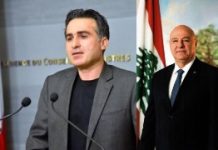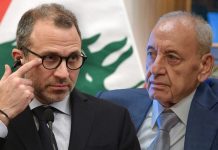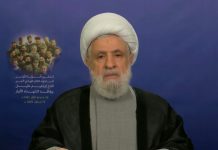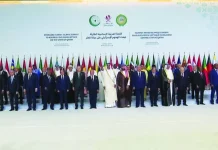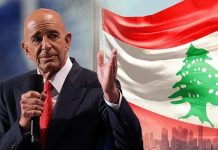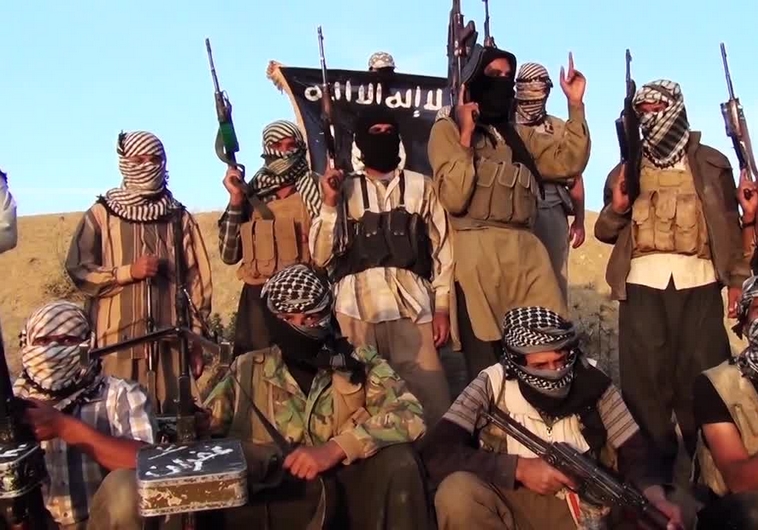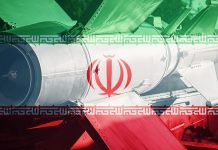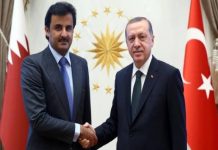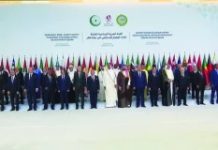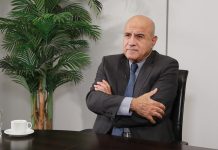Arab Shiites must reclaim religious authority from Iran
Mohammad al-Sulami/Al Arabiya/February 03/16
It’s well-known that Iraq is the origin and base of Shiite authority in the Middle East. It was first Baghdad then Najaf, and this lasted for centuries. Iran’s Qom however did not emerge as a religious center until the first quarter of the 20th Century, and it did not emerge as a reference for Shiites until the Iranian revolution erupted and the mullahs seized power in Tehran. In other words, Arabs, and not the Persians, have throughout history been the leaders and references of the Shiite sect. After the Iranian revolution, Iran worked on a strategy to market itself as a leader and embracer of Shiites across the world, particularly within its geographic surroundings. It assigned itself as defender of the Shiites to the extent that it included an item in the constitution that stipulates defending what Tehran calls “the vulnerable,” a term that means Shiite and Shiism but with an embellished touch.
Through its “umm al-qura” (mother of villages) theory, Iran has sought to replace the capital of the Islamic world, Makkah, with Qom. But Iran miserably failed, so it worked on turning Qom into the capital of the Shiite sect and thus replacing Najaf. It worked on attracting some Arab Shiite clerics and provided support through seminaries which are taught in Arabic in that small city. It also offered scholarships to Shiite youths, of whom many were recruited in Iran and returned home to become part of Iran’s cells in the Arab world. This is how Iran’s Velayat-e Faqih ideology and principles, which are characterized with an extremist Persian touch, were exported to Shiite communities in the Arab world. However, Iran’s major aim will not just be achieved by focusing on Qom and making it stand out. Iran has reached a conviction that it won’t achieve its aims unless by marginalizing and weakening the Arab Shiite authority in the region. It has therefore resorted to using the carrot and stick approach and demonizing its rivals, fabricating accusations against them or assassinating them. It has also warned of certain Shiite figures who are well-aware of the Iranian project which does not care about the Shiite sect itself as much as it cares about possessing all the means to achieve its nationalistic and political aims in the region. Among these Shiite symbols that were targeted or marginalized in Iraq and Lebanon are al-Hasani, al-Waeli, al-Khoei, al-Sarkhi, al-Husseini, al-Amin and others.
Will Arab Shiites liberate the Shiite sect from Iran’s grip?
Transferring the Shiite authority from Iraq to Iran and the “Persianization” of the sect also means Tehran’s seizure of the funds collected from Khums tax and Nadhrs vows. I believe Iran would use these funds to support its political and sectarian agenda in the region as it has military wings and militias in many countries where there are Shiites – militias who operate in Iran’s favor and against their countries’ interests. Therefore, there’s an urgent need to issue decisions and legislations that criminalize exporting these Khums and Nadhrs funds to other countries and to make sure they’re spent on the poor.
Iran does not represent all Shiites
Given all this, we must ask the question of whether Iran is the only party to blame for this. Objectively speaking, I think it’s inaccurate to say Iran is the only one to blame as some Arabs have directly or indirectly contributed to leading Shiites into Iran’s arms. Viewing Iran and Shiites as two sides of the same coin is a huge mistake. Not all the Shiites imitate Khamenei or believe in Velayat-e Faqih or believe in the sectarian extremism which contaminated the sect over five centuries ago, which was revived following the 1979 revolution.
I’ve always said that Iran does not represent all Shiites and vice versa. Iran is not 100% Shiite; Sunnis constitute about 10% of the population. The Iranian population is also made up of several other religions and sects. Logically speaking, we must not consider that all Shiites are linked to Iran. There are Shiite patriots who are loyal to their countries and who are well-aware of the Iranian threat. Yes, many of them do not clearly show this out of fear that Iran’s proxies will harm them, harass them or fabricate false accusations against them. However this does not mean they are not out there. Bringing Arab Shiites who admire Iran back to the Arab embrace and keeping them away from Iran can be achieved through several steps which Arab Shiites themselves can do before others. Restoring the Shiite authority to Najaf is also a pan-Arab necessity. It’s also important that Shiites in Arab Gulf countries establish references for their sect in their countries – references which are linked to them and which they can give their Khums and Nadhrs funds to. This will prevent Iran from infiltrating their countries and societies. It will also help them see how non-Persian Shiites are being treated in Iran and how Tehran persecutes minorities in Ahaz, Azerbaijan and other areas. Arabs, Azeris and Turks in Iran are unjustly treated by the ruling power in Tehran despite the fact that they belong to the Shiite sect. So in what way do you expect Iran to treat Shiites who are outside its borders?
In brief, the Iranian regime’s major aim of alleging to support and defend Shiites in the region can only be seen within the context of serving the Iranian political project in the region. Iran wants to use Shiite minorities to serve this project. Are those fooled by Iran aware of this truth? And more importantly, will Arab Shiites liberate the Shiite sect from Iran’s grip?
Lining Up the Tools to Break the Islamic State Brand
Alberto M. Fernandez/Washington Institute/February 03/16
http://www.washingtoninstitute.org/policy-analysis/view/lining-up-the-tools-to-break-the-islamic-state-brand
Reversing the political, military, and ideological factors that led to the movement’s rise will require substantive projects that are as self-sustaining and nimble as IS has proven to be.
The Islamic State brand is an ambitious and seductive vision that has proven to be a tremendous media success. Yet this vision is ultimately tethered to the perception of an actual, functioning utopian state. Military action against IS havens in Syria and Iraq is thus the most effective way to puncture the group’s propaganda balloon. Ongoing efforts toward that end are producing some tangible results, but all too slowly. And while technical measures to diminish the volume of IS material available on social media are also important, the brand is now a mature one that is well understood and internalized by proponents and adversaries alike. Washington will therefore need to find more creative ways of getting its own message across, mainly via its partners in the Middle East.
REBRANDING AND WORKING THROUGH PROXIES
On the surface, the recent rebranding of the Center for Strategic Counterterrorism Communications (CSCC) into the Global Engagement Center seems to be nothing more than a public relations gambit. Not one of the responsibilities listed in the State Department press release announcing the change was new — CSCC had worked on all of these tasks as far back as 2011. According to press accounts, however, the new center will no longer be in the direct messaging business. If its budget remains the same — about $5.5 million per year — the move away from direct messaging would free up approximately $3.5 million for the creation of overseas proxies and indirect messaging platforms.
Earmarking more funds for such efforts is certainly worth trying, assuming the programs in question include solid performance metrics and congressional oversight. Yet the one visible example of a Middle Eastern messaging proxy has not lived up to its promise, at least not yet. Launched to great fanfare in July 2015, the Sawab Center in the United Arab Emirates is largely funded by Abu Dhabi, with two American foreign service officers detailed to the operation. Its output — some 2,900 tweets in over six months — has been a bit underwhelming, resembling a smaller, more timid version of CSCC’s digital outreach team. Although it should have greater freedom to do things that overt U.S. government communications avoid, Sawab is missing two things that the IS brand has in abundance: volume and passion. The idea behind Sawab is solid, however, and one hopes that it will mature, and that similar initiatives in the pipeline will evolve into something more substantive and consequential.
Unsure about how to proceed in the propaganda war, the U.S. government wasted much of 2015, as news reports presented an image of confusion and drift compounded by poor management and infighting over the right formula to follow. Apparent micromanaging by the National Security Council, a risk-averse mentality, and obsessive attention to form over substance prevailed. Perhaps something has been learned from this debacle and the center’s new, well-regarded leadership will be empowered to do the necessary work. The government seems to be making the beginnings of slow progress, but it is too early to tell.
INCREASING VOLUME AND FINDING VOICES
Some of last year’s efforts to facilitate information on IS defectors and recanters could prove very valuable and should be supported and expanded. As IS fighters return to their home countries, governments should find creative ways to incentivize counterradicalization media outreach as much as integration and law enforcement. In Washington, the disconnect at the top levels of government does not detract from the dogged work being done in this field by dedicated civil servants, foreign service officers, and authorities detailed from other agencies.
Given the importance of Iraq and especially Syria to how the IS discourse is sold to Western and non-Western audiences distant from the front, there is real value in empowering Sunni Muslim voices in those war-torn countries who can speak directly to wavering individuals outside the Middle East. In essence, their message would be, “I am one of those Muslims whom IS claims to be defending, and the image that the group is presenting to you of our reality is a false one.” The power of such personal testimony is clear in the videos propagated by IS itself — so many of the individuals who appear in these messages speak clearly and directly, stating all sorts of awful things with uncovered faces and tremendous conviction. Last month, the Telegraph described how London police have used videos of Syrian mothers speaking in Arabic to reach out to the British population. This is a worthy experiment — the question is whether it can be deepened and individualized to replicate the one-to-one radicalization process that is so often a key factor in influencing new recruits. It should be.
As detailed by recent PBS NewsHour coverage, the U.S. government and others are also funding some interesting work in the peer-to-peer interactive realm on social media, often through universities. These efforts seek to begin redressing the imbalance between the time that IS and Washington respectively invest in recruitment. Only time will tell whether such small projects will be able to contest the individual approach pioneered by IS and its volunteer recruiters, but it is a worthwhile investment to make.
IDEOLOGY MATTERS TOO
The U.S. government should also find room for a well-funded regional media effort promoting tolerant, liberal Arab Muslim values in contrast to the vision of Salafi jihadism. This is a longer-term project that has value in promoting the pluralism and open discourse that are anathema to movements like IS and al-Qaeda. Some pioneering efforts to do this have arisen in the private sector (e.g., Fikra Forum). And clearly there are enough eloquent individuals in Syria, Lebanon, Jordan, and even the Gulf states who hold tolerant worldviews but are rarely empowered by Washington or anyone else — certainly not on a consistent basis, and not remotely like the support lavished on a range of non-IS Salafi media.
Again, this is not something the U.S. government can do directly, but it can certainly prioritize the promotion of such efforts among its regional partners. President Obama has spoken several times about the importance of defeating the Islamic State’s ideology, but he has done so without explaining what that ideology is or how to counter it. Indeed, shifting to indirect initiatives underscores the deficit in the government’s direct counterterrorism communications efforts. All too often, its default approach has been to work with friendly governments or contract the task to companies or organizations inside the Beltway. To be sure, the Moroccan, Jordanian, and Emirati governments are making some very worthwhile efforts in this area, and there is nothing wrong with that. More is needed, however.
Washington should also look to expand the scope of nongovernmental messaging platforms and organizations in the Middle East, with the goal of building sustainable messaging efforts against Salafi jihadists. Last month, for example, an IS “Wilayah Nineveh” video launched as part of a coordinated campaign on North Africa spent almost as much time attacking Sufi Muslims and liberals as it did criticizing political authorities. The Salafi “sea” from which IS rises should not be ignored — encouraging regional partners to push back against the political and societal discourse that sets the stage for violence is good policy.
Finally, it must be remembered that the Islamic State is only one part of a larger ideological trend that is inimical to U.S. values and foreign policy interests. The petri dish where it and al-Qaeda evolved was not created overnight, and the political, military, and ideological factors that led to their rise will not be easily reversed. Salafi jihadism needs to be fought on every front, and there seems to be a slow coalescing of critical mass against it; for example, witness the Marrakesh Declaration that emerged from a recent conference on “Religious Minorities in Muslim Lands,” jointly convened by the Moroccan government and the UAE-based “Forum for Promoting Peace in Muslim Societies.” Yet the jury is still out on whether these efforts are too cosmetic, superficial, or esoteric. The challenge is to translate understanding and alarm into substantive policies and projects that are as self-sustaining and nimble as IS has proven to be.
**Alberto Fernandez is vice president of the Middle East Media Research Institute (MEMRI) and former State Department coordinator of the Center for Strategic Counterterrorism Communications.

